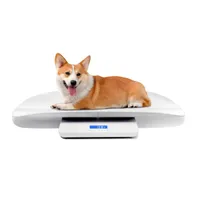Obesity in dogs: Vet’s guide to signs, risks, and treatment
Obesity in dogs is a serious but preventable condition that can impact your pet's health and happiness. Here's how to spot the signs and reduce the risks
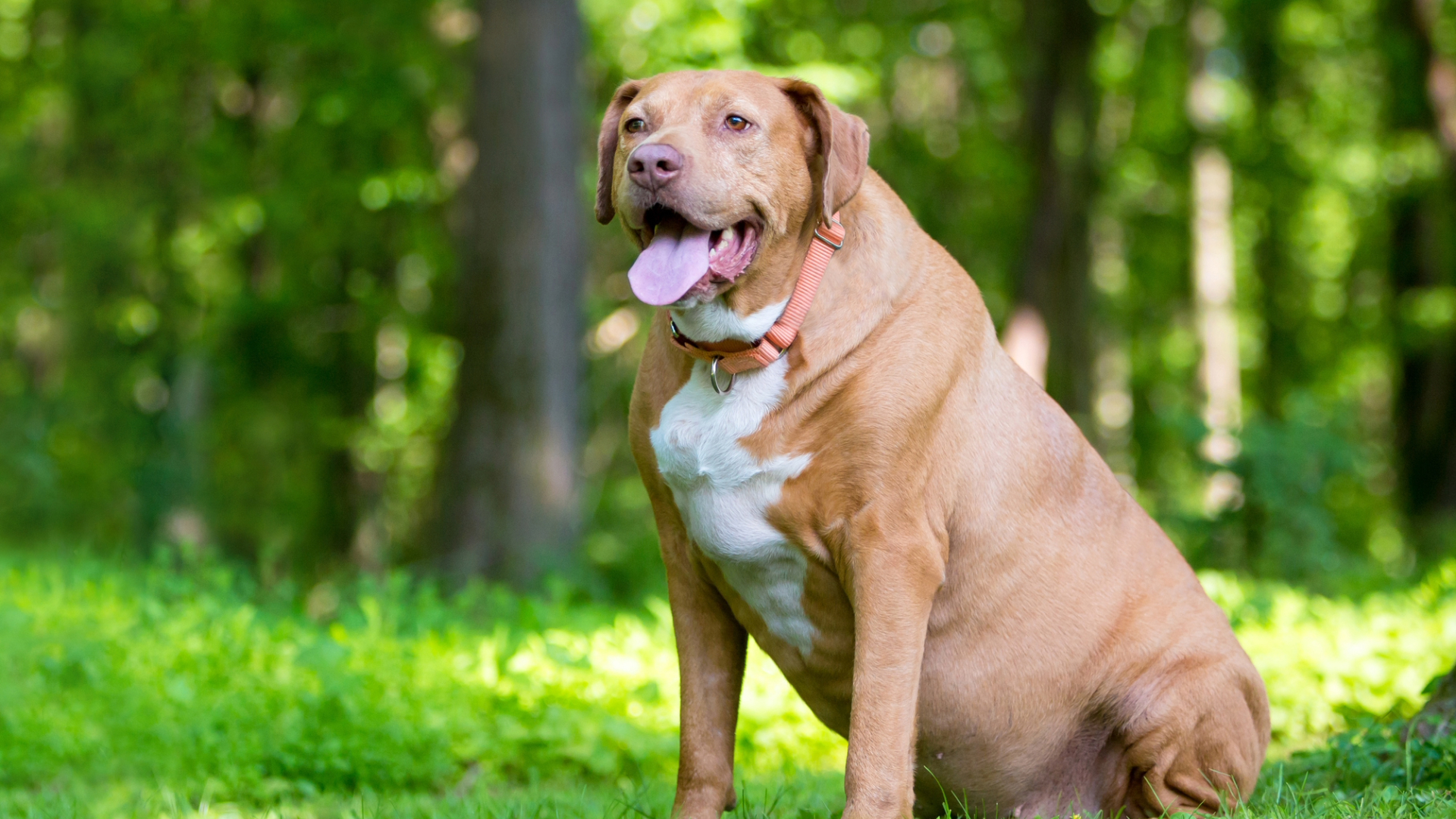
As a vet, obesity in dogs is something I encounter all too often in practice, and it’s a growing problem among our canine companions. In my job, I see first-hand the impact that carrying extra weight can have on a dog’s health and wellbeing.
I have been qualified for more than 13 years and have worked with many dog owners to create tailored weight loss plans – combining nutrition advice, exercise regimes, and regular monitoring using the best scales for pets. It’s so rewarding to see a dog’s transformation – particularly in their energy levels and quality of life.
Whether you’re worried your dog is carrying a few extra pounds, or you’re trying to help them slim down, it’s important to understand what obesity means and how it can be managed. Keeping your dog at a healthy weight is one of the best ways to help them live a long, happy life – and you can learn more below:
What is obesity in dogs?
Obesity in dogs is defined as an excessive accumulation of body fat to the point that it negatively affects their health. It’s more than just being a bit overweight – obesity means your dog has too much fat stored in their body, putting strain on their organs, joints, and overall function. A dog is generally considered obese when they weigh 20% or more above their ideal body weight.
There are a few key factors that contribute to obesity in dogs. The most common cause is an imbalance between the calories they consume and the energy they expend.
In other words, if your dog eats more calories than they burn off through exercise and daily activity, those extra calories get stored as fat. Other causes include underlying health issues such as hypothyroidism or Cushing’s disease and certain medications.
It’s important to distinguish obesity from simply being overweight. An overweight dog carries a few extra pounds, while an obese dog carries significantly more fat, leading to measurable health risks. Both conditions need attention, but obesity can be particularly damaging and harder to reverse.
Get the best advice, tips and top tech for your beloved Pets
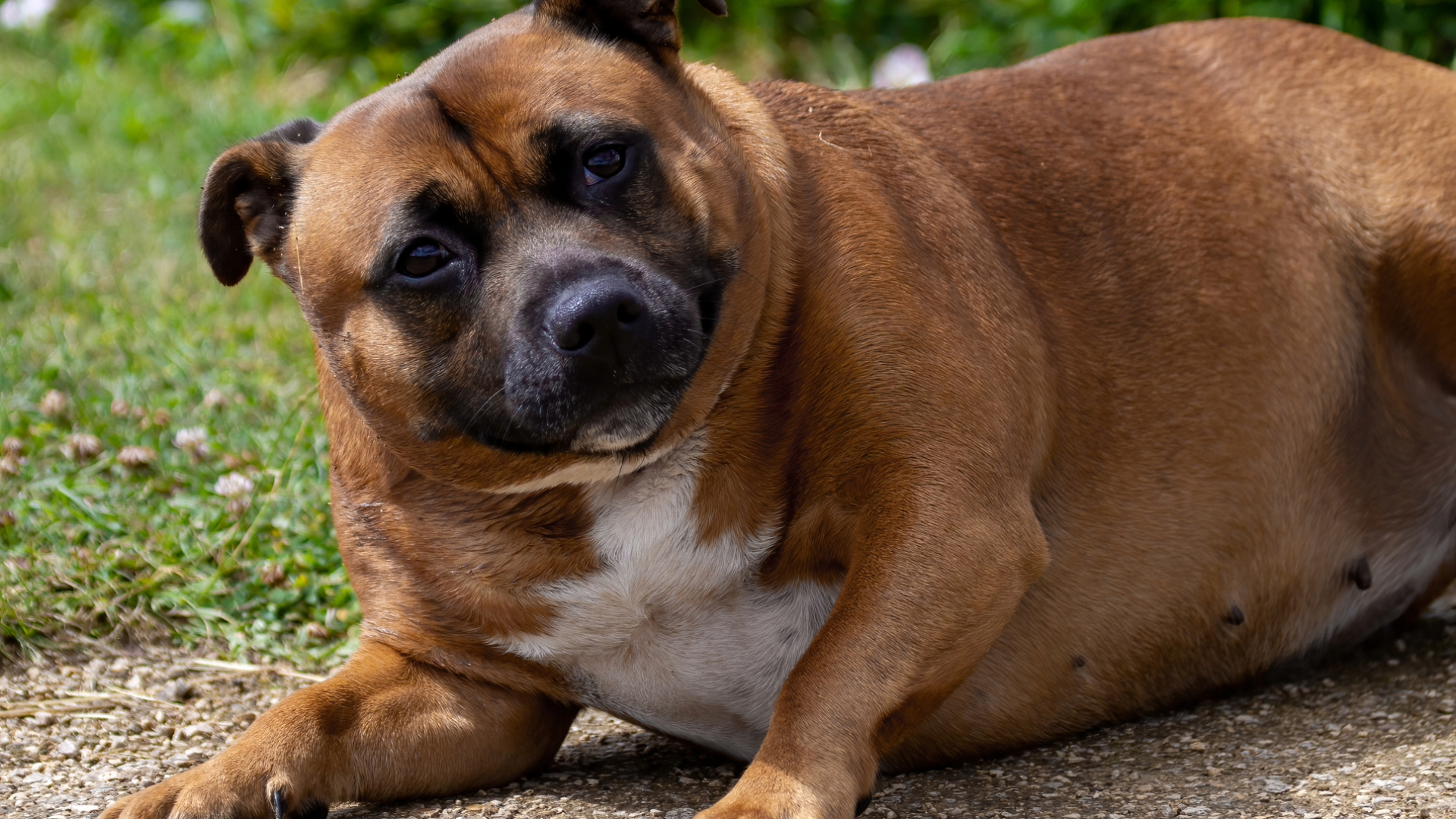
Risks of obesity in dogs
Carrying excess weight puts your dog at risk of several serious health conditions, including:
- Arthritis and joint problems: Extra weight puts more strain on your dog’s joints, leading to joint pain and reduced mobility.
- Diabetes mellitus: Obese dogs are more likely to develop diabetes due to the way fat affects insulin regulation.
- Heart and respiratory disease: Excess fat can make it harder for the heart and lungs to function efficiently.
- Reduced heat tolerance: Obese dogs struggle to regulate their body temperature, increasing their risk of dog heatstroke.
- High blood pressure: Obesity is linked to hypertension in dogs, which can have knock-on effects on other organs.
- Increased anesthetic risk: If your dog needs surgery, being overweight makes anesthesia riskier.
- Reduced quality of life: Obese dogs often have less energy and less stamina, and can struggle to enjoy normal activities.
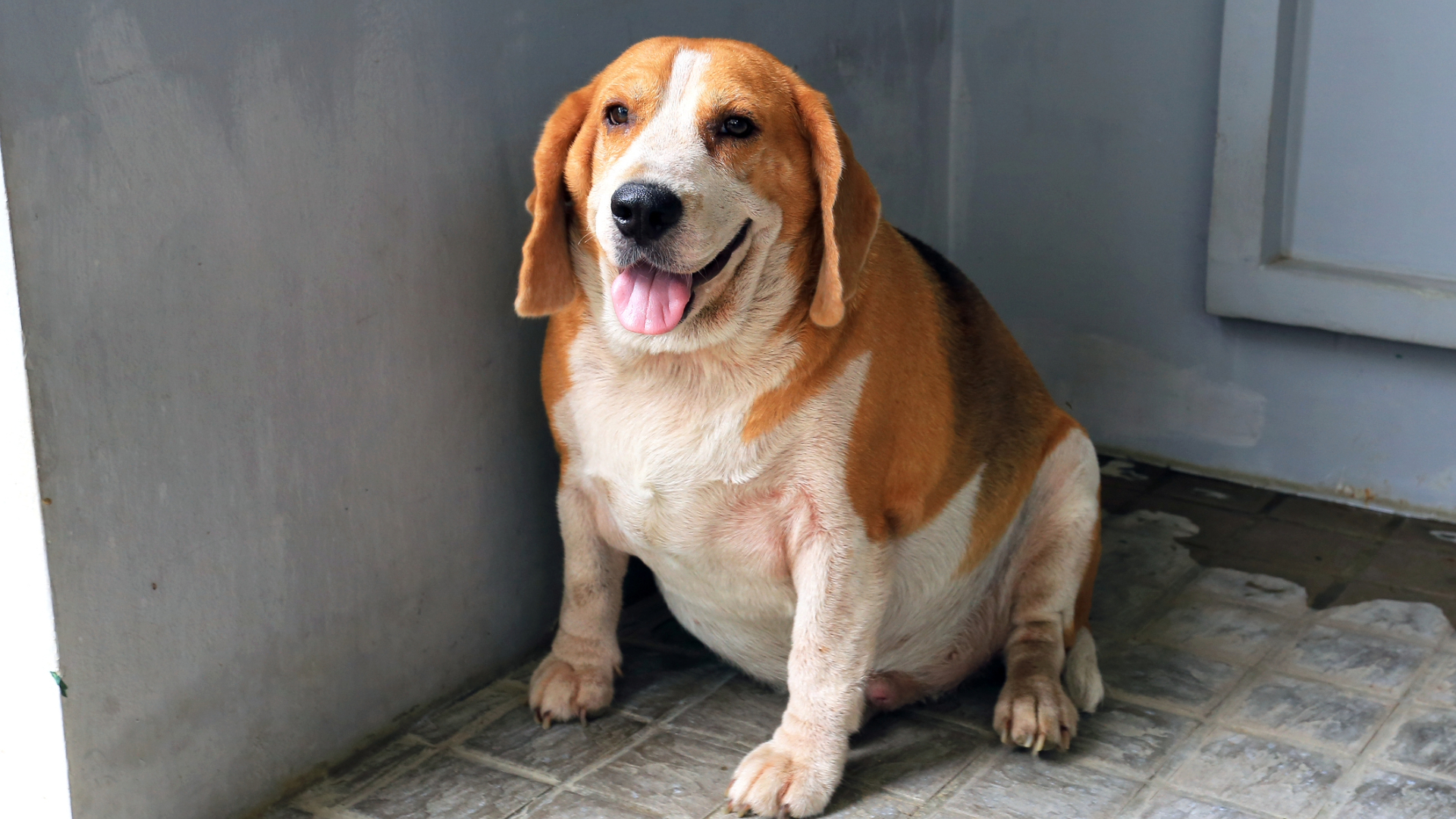
Life expectancy of overweight dogs
It’s heartbreaking to think that excess weight could shorten your dog’s life, but unfortunately, research shows that overweight dogs may live up to two years less than their ideal-weight counterparts. Obesity increases the likelihood of developing chronic conditions that can ultimately reduce both lifespan and quality of life.
Even mild obesity has been linked to a shorter lifespan, so tackling weight issues early is crucial. By helping your dog reach and maintain a healthy weight, you’re giving them the best chance of a long, happy life.
Signs of obesity in dogs
Obesity in dogs can sometimes creep up gradually, it’s important to watch out for signs that your dog may be carrying too much weight. These include:
- A lack of visible waist when viewed from above
- No obvious tummy tuck when viewed from the side
- Difficulty feeling the ribs without pressing firmly
- Reduced stamina and reluctance to exercise
- Panting more than usual during mild exertion
- Difficulty jumping up onto furniture or into the car
- Sleeping more and being less playful
- Signs of discomfort such as joint pain
- Skin issues, in some dogs, obesity can lead to skin problems including infections
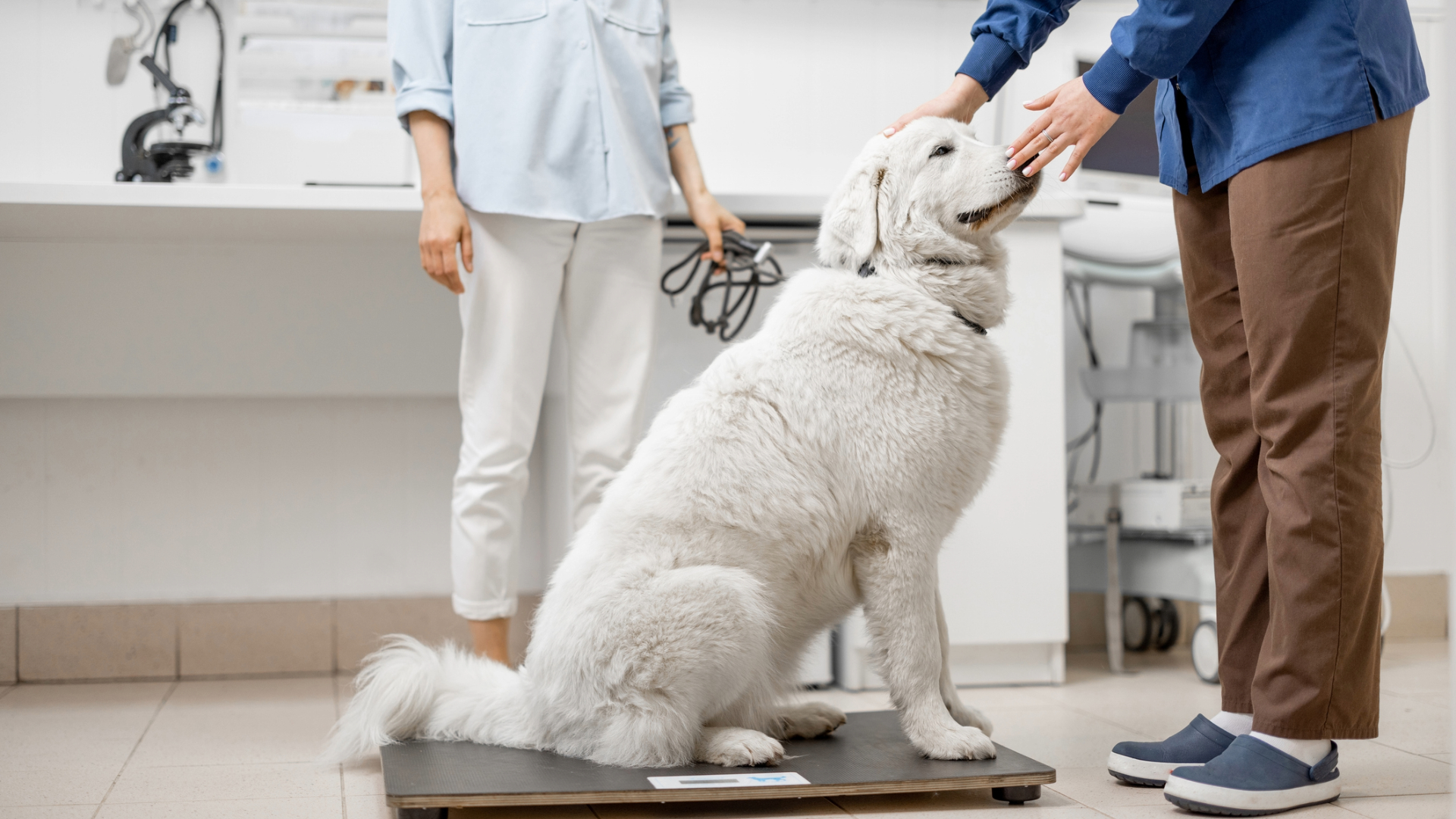
How to tell if a dog is obese
The best way to tell if your dog is obese is by using a combination of weighing and body condition scoring (BCS). Your vet can show you how to perform a BCS at home – this involves feeling your dog’s ribs, looking for a waistline, and assessing their body shape from above and the side.
Ideally, you should be able to feel your dog’s ribs easily without a thick layer of fat covering them, and they should have a visible waist behind the ribs. If the ribs are difficult to feel and the waist has disappeared, your dog may be overweight or obese.
The exact ideal weight for each individual dog depends entirely on the breed, age, sex, and body shape of the dog – there is no one-size-fits-all number.
Monitoring your dog’s weight regularly is key to spotting changes early. Regular weigh-ins at your vet or at home using pet scales can help you keep track. If you’re unsure what your dog’s ideal weight should be, ask your vet for guidance based on their breed, age, and body condition.
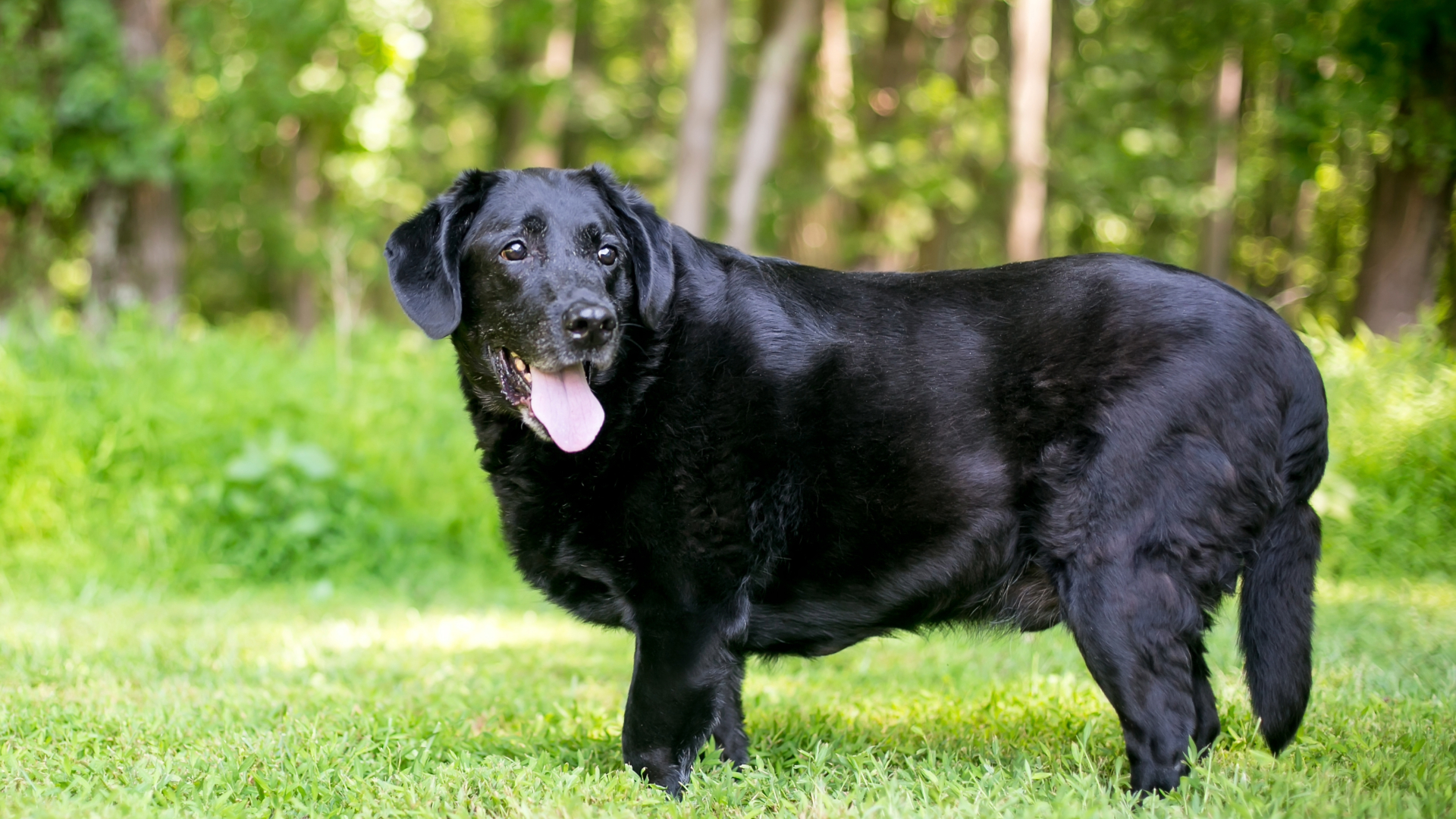
How can I help my dog to lose weight?
Helping your dog lose weight is a gradual process that requires commitment and consistency, but it’s well worth the effort. Here are some key steps to success:
- Visit your vet for a weight loss plan: Your vet can calculate how much weight your dog needs to lose and recommend a suitable daily calorie intake – here is more information about how much to feed a dog.
- Switch to a weight management diet: Special veterinary diets are formulated to be lower in calories but still filling and nutritious.
- Track progress regularly: Weigh your dog every couple of weeks and keep a record of their weight loss journey.
MindPet-Med Digital Pet Scale | Amazon
With a capacity of up to 220lbs and three weighing modes (kg, oz, lbs), these scales are ideal for small pups to larger breeds. The sleek, easy-to-clean design and precise 0.02 lb accuracy mean you can track even small changes in your dog’s weight at home.
- Cut out extra treats: Avoid feeding table scraps and high-calorie treats. Instead, use healthy alternatives like carrot sticks or cucumber.
- Increase exercise gradually: Build up your dog’s activity levels with more frequent walks, gentle play, and low-impact exercises.
- Feed a measured amount of food: Weigh your dog’s food accurately rather than guessing, and stick to their daily allowance.
- Stay positive and patient: Weight loss takes time, so celebrate small milestones and keep going.
Helping your dog maintain a healthy weight is one of the most important steps you can take to support their long-term health and happiness. Canine obesity is a growing concern and can lead to a variety of serious health problems.
Fortunately, healthy weight loss is achievable with the right support, diet, and lifestyle changes. If you're unsure where to begin, speak to your vet – they will always be happy to help.
Read next: Things you can do to help your dog lose weight and ways to workout with your pet. Or, learn about hypothyroidism in dogs

Emma Chandley is a vet with 14 years of experience and has a keen interest in surgery. After graduating from the Royal Vet College in London in 2011, she achieved a postgraduate certificate in small animal surgery from the British Small Animal Veterinary Association and Nottingham Trent University. She was then awarded advanced practitioner status in the same discipline by The Royal College of Veterinary Surgeons. She has a black Labrador and two pygmy goats at home.
Edited by Megan Milstead.
This page was last updated in May 2025 by Emma Chandley.
Emma Chandley is a vet with 14 years of experience and has a keen interest in surgery. After graduating from the Royal Vet College in London in 2011, she achieved a postgraduate certificate in small animal surgery from the British Small Animal Veterinary Association and Nottingham Trent University. She was then awarded advanced practitioner status in the same discipline by The Royal College of Veterinary Surgeons. She has a black Labrador and two pygmy goats at home.
